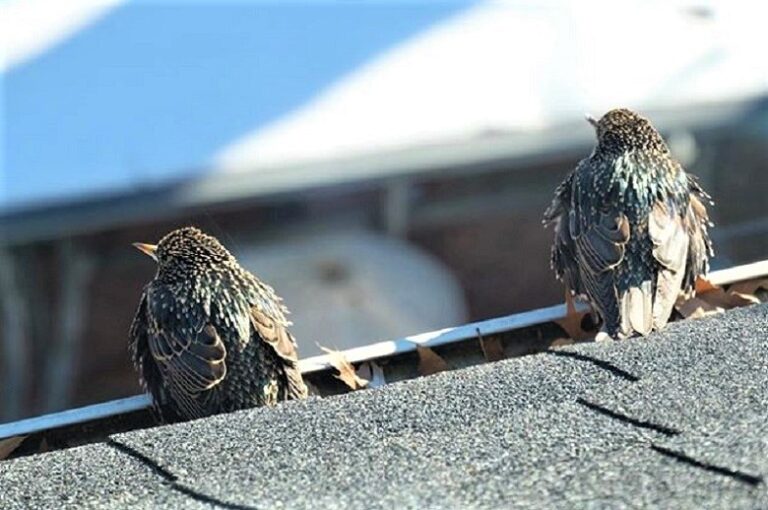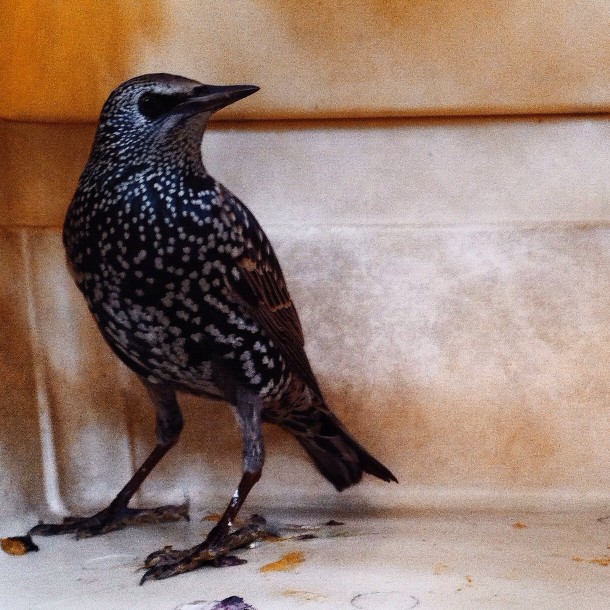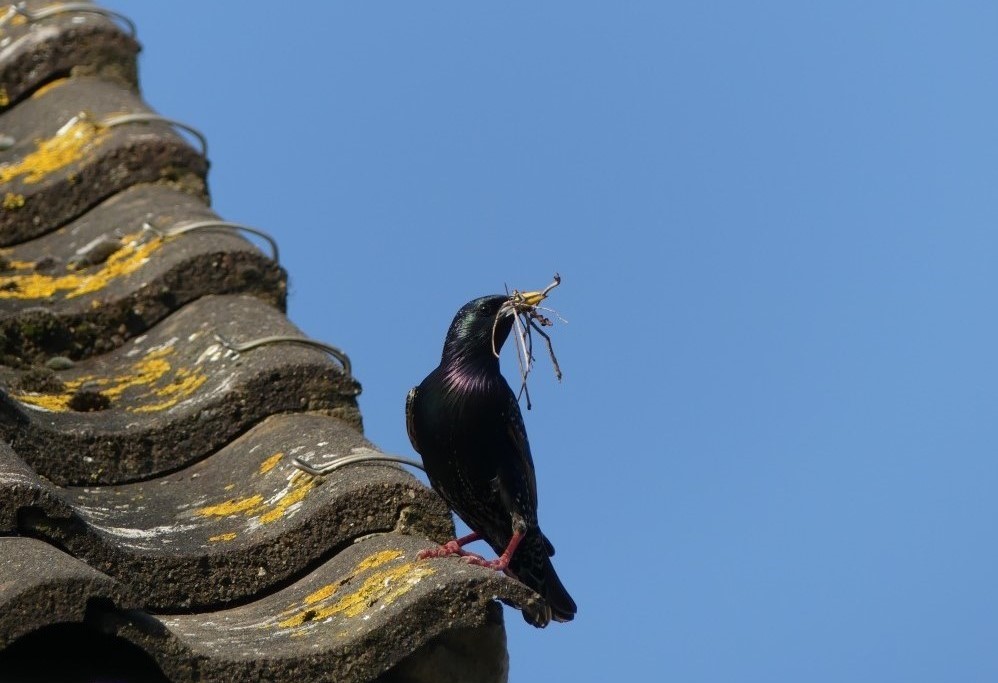Starlings are a non-native bird species introduced to the US from Europe in the late 19th century. These birds are a nuisance everywhere, they reproduce and invade urban areas very rapidly.
As with any other birds, starlings nesting in vents are a very common problem, particularly during the spring when the birds start the nesting process. Most starlings will then seek the seclusion and dryness of vents in order to find a suitable place to build nests.
Research has shown that starlings are cavity nesters, which means they tend to construct their nests inside holes and crevices. This explains why they favor various vents and ducts for building nests and caring for their young.
Starling nests in vents can cause serious problems for homeowners. Keep reading to learn more about starlings nesting in vents and how to protect your home from the infestation.
Can Starlings Nest In Vents?
Starlings are very invasive birds, they can nest about anywhere, including the vents. Their nests tend to be quite large in size, and are a loosely woven mass made out of hay, grass, twigs, bark, and trash.
They like to build their nests in warm and secluded areas, which usually leads them to ductwork and exhaust vents. One of their favorite places is wall vents.
Starlings also love to nest in nice, cozy dryer vents. They are drawn to dryer vents because of their high location, as these vents are mostly some distance from the ground and therefore far from their predators.
But there are also other vents in the house where these birds might live, i.e. bathroom fan vents, oven and stove exhaust vents, microwave vents, roof vents, gable vents, or heater and furnace vents.

Why And How Do Starlings Get Into The Vents?
Starlings are very clever and agile creatures and know very well how to select a site to nest. Even though the vents have flaps, they are able to fly in and set up their nests in the ductwork.
Until a few years ago, starlings used to nest only in vents from which the flaps had been removed. However, these days they have figured out how to lift the vent flaps to get inside. They will fly at full speed towards the vent, then lift the flap with their beak and vanish inside without even slowing down.
Apart from the flaps, these birds can tactfully use their beaks to breach dryer vents and exhaust vents, and will also easily take advantage of broken attic vents.
The vents in the house walls are common entry points for starlings. But they can also enter inside your house through a wide variety of vents mounted on the roof, such as a ridge vent, static vent, and powered fan vent.
What Damage Do Starlings In A Vent Cause?
Starlings in a vent are especially destructive whenever they get access to your home and can cause some serious damage to your house and disrupt your well-being.
● FIRE
Once in the vent, a starling will stuff the ductwork full of combustible nest materials that restrict airflow. This can create a dangerous situation as the dry grass, twigs, and leaves can quickly catch fire.
Also, the lint build-up in the exhaust duct or dryer can block the airflow and cause overheating of the appliances, which might result in a fire.
Therefore, the issue must be dealt with as soon as possible. Keeping the vents clean and clear of any debris can save your house from a tragedy.
● APPLIANCE MALFUNCTION
If you find a nest or nesting materials that are clogging the dryer vent, it needs to be thoroughly cleaned to remove any obstructions to airflow. This is because the blockage of the dryer hose can cause overheating of the appliance. And even a partial blockage might cause the dryer to not operate properly. This can cause damage to the appliance and ultimately constitute a potential fire hazard.
So, in the case of a clogged dryer or oven vent, it is much more than just getting rid of the obstacle. It’s vital to ensure that there is a proper flow of air for the appliance to run efficiently.
Moreover, bird activity in the dryer vent can also lead to rupture of the exhaust line, which causes the dryer to ventilate into a wall or ceiling. As a result, your house will be damaged by unseen moisture.
● ODOR
If the birds got pushed or pulled into the dryer hose, you could have a foul odor to deal with.
A damaged or clogged duct in a bathroom vent will cause air contamination, meaning the air from the birds will circulate around your home. With the build-up of nesting materials, bird droppings, rotten eggs, and dead young, warm temperatures will intensify the odor. Eventually, the unpleasant smell will permeate your living areas. When you turn the exhaust fan on, the clogged line will force the air back into your house.
● HEALTH HAZARD
Starlings carry many diseases and parasites like bird mites. The parasites accumulate in the vents as the young birds are born. Eventually, those thousands of mites migrate away from empty nests or dead birds and end up inside your home. This will lead to sanitation issues, putting your family and pets at risk.
In addition, bird droppings contain a lot of pathogens and bacteria, such as E. coli and salmonella. These can have various negative effects on human health. Also, spores in bird droppings can cause an even greater health risk if inhaled.

How Do You Protect Your Vents From Starlings?
As prevention is key, it’s always recommended to employ appropriate methods to keep starlings out of the vents before they start building their nest.
To prevent starlings from building nests in your vents, you should:
– Install netting, ready-made screens, guards, or long pieces of wire with a hook on the end over the vent openings.
– Install vent covers that are made of metal instead of plastic, as they will last longer in adverse weather conditions.
– Install a solid galvanized mesh on the vents. This will keep the starlings out and ensure the vents continue to operate.
Removal of starlings and their nests is a dirty, unsafe, and difficult job, therefore, it’s best to call a professional to have this service done for you.
If you need help eliminating starlings and nest material from the vents, contact our experienced team at Westchester Wildlife. We will safely get rid of the starling infestation in your home and help prevent future problems from occurring.



